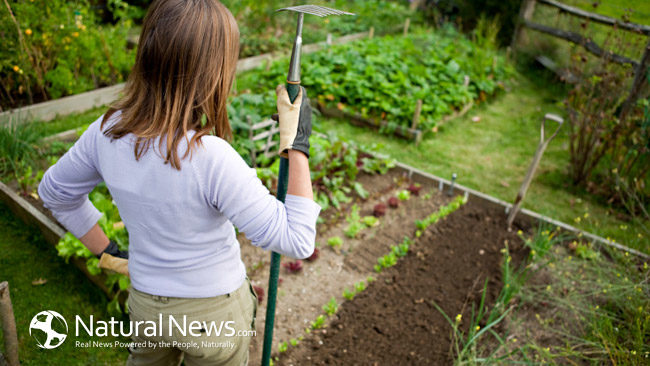Want to learn how to save money this year on groceries while at the same time eating from home for free? Simply start a comfortably sized backyard garden or indoor garden this spring and summer season from home! Doing so will ensure you and your family eat better by switching to natural and organic fruits and vegetables grown right before your eyes.
With just a few ‘Do It Yourself’ tips growing an upwards of up to half of your grocery list may be possible from home.
Making Homemade Nutrients
The first most important tip for growing food from home and eating for free is storing a small supply of homemade nutrients beforehand. Nutrients will have to be made for both the vegetation stage of the plant’s life cycle and the flowering stage. Nutrients are relatively cheap and can even be made from excess table scraps if thrown into a compost pile and churned with the garden soil.
Making Homemade Pesticides
To keep away the bugs pesticides will have to be made in order to preserve the fruit and vegetables as much as possible. There are many different forms of natural and organic pesticides with some of the most popular consisting of vinegar and salt. Ingredients can be found at home and preparation only takes a few minutes.
Growing Various Backyard Fruits and Vegetables
Growing food from home is great for your budget but growing essential foods will improve your health and diet. Essential foods include fruits and vegetables that provide the body with nutrients such as Vitamins A and D, protein, and of course amino acids. Fruits and vegetables that provide these essential nutrients include beans, berries, corn, and even squash. In fact, an old Native American gardening technique called The Three Sisters consists of beans, corn, and squash and provides the body with enough essential nutrients that renders the need for protein from meat no longer necessary. The Three Sisters technique is an exquisite gardening technique especially for vegans and vegetarians.
Maintaining the Crops
With the right homemade nutrients as well as the right homemade pesticides maintaining the crops should be for the most part fairly easy. However, pests such as feral cats, raccoons, crows, and possums may come along and eat at parts of the garden. If this happens than fences, scarecrows, and even smell deterrents such as local predator urine may be needed. Installing motion detector lights around outdoor gardens will also help keep rodents away from the garden.
Harvesting the Crops
Harvest time is one of the most exciting times when growing a garden from home. All of the hard work and effort is finally on display to be eaten and enjoyed. Be sure to have the storage space already prepared for all of the different fruits and vegetables that are to be harvested. Be aware that the entire plant(s) may not be ready for harvest but just a portion of it. For example, beans can usually be harvested up to three times in a single growing season. Another example is corn grows at different speeds especially the higher up the stalk each one is. Continue harvesting fruit and vegetable plants near through to the end of fall.
Storing and Canning the Food
Some vegetables such as squash can sit out at room temperature well for half a year. However, other foods such as fruits will need to be immediately canned or jarred. Fruits such as apples, strawberries, peaches, and berries can be cleaned, cut, and sealed into air tight containers and kept in cool rooms in order to preserve their shelf life. Apples can also be mashed into apple sauce and then canned or jarred so that fewer apples will go to waste and more apples can be used for other meals.
Preserving Seeds for the Next Year
One of the most important steps for saving money and growing from home is drying and storing seeds for the following planting season. Seeds from any fruit or vegetable can be dried and stored in air tight containers so that they may be germinated the following spring season. All that is needed are drying tools such as paper towels or cloth, air tight containers for every strain of seed, and a cool dark storage area so that they may be left undisturbed.
Backyard Livestock
The amount of space available will be the ultimate factor when determining which type of livestock can be kept at home. Depending if there is enough grazing space than livestock as large as cows may be kept or even goats. However, if space is limited than even chickens may kept in order to store eggs for protein and chicken meat as a future alternative meal. Be sure to properly account for how much space is available before investing into livestock.
Sources:
“Grow Your Summer Garden.” Kalgi Patel, TNN
http://timesofindia.indiatimes.com/life-style/home-garden/Grow-your-summer-garden/articleshow/32428873.cms
“How to Get Free Food.” By Erin Huffstetler
http://frugalliving.about.com/od/foodsavings/tp/Get_Free_Food.htm
“DIY Indoor Gardening.” By Dawn Williams
http://www.ehow.com/how_6563828_diy-indoor-gardening.html





